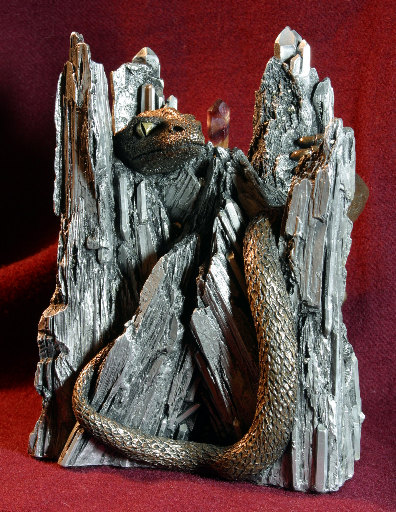

|
Caer Sidhi |
|
|
|
|
Rookn
1996 Number 12 of 100 One of the oldest records of Caer Sidhi (kar she), the castle at the center of the British Celtic Underworld, comes from the 6th century oral tradition: "The Spoils of Annwfn (Anoon) by the Welsh bard Taliesen. Arthur sailed with 300 knights to the glass-like island, located to the SouthWest of Wales and Ireland, in an attempt to capture the magical Cauldron of Rebirth. It was a large vessel of plenty into which a dead warrior could be dunked and revived, however he was without the power of speech. The faerie fortress rose mysteriously out of the sea, surrounded by a strange mist; and was visible to the living only one night a year, October 31/ November 1, on the Celtic feast of Samhain (sowane). Aging and sickness were never known on this island of intoxication, where sparkling wine was the only drink. Although it was a place from which no mortal man could escape, Arthur managed to return home, but with only seven knights and empty handed. The Cauldron of Rebirth has been depicted on many Celtic artifacts including the Gundestrup Cauldron found in 1891, in Raevemosen, Juteland (Denmark). Its legend, which predates Christ, later became the basis for Christian Grail romances and shows the Celts to be one of the first cultures to evolve the doctrine of immortality of the soul. Also from the Celtic Underworld, and many times appearing to Arthur and his knights, was the beneficient Questing Beast. According to the 12th century historian William of Malmsbury, the apparition was composed of a snake's head, the forebody of a hind, the rear body of a leopard, and the tail of a dragon. From its stomach came the barking of twelve hunting hounds. The creature appeared in dreams and hallucinations from exhaustion or fasting only to those caught up in the fever of a worthy hunt or search. Its vision inspired, strengthened, warned of foreboding circumstances or portended success. |